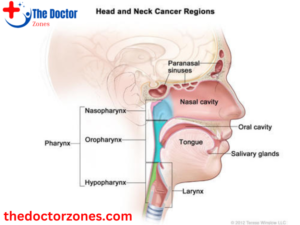Head and Neck Cancer Treatment
Head and neck cancer treatment can include surgery, radiation therapy, chemotherapy, targeted therapy, immunotherapy, or a combination of treatments.
Understanding the Different Types of Head and Neck Cancer
Head and neck cancer is a collective term for a range of malignant tumors that can develop in the mouth, throat, nose, sinuses, and salivary glands. Despite its relatively low prevalence compared to other cancers, accounting for about 4% of all cancers in the United States, understanding and addressing head and neck cancer is crucial due to its complex nature and impact on quality of life.
Effective treatment for head and neck cancer often involves a combination of therapies tailored to the cancer’s location and stage. This article aims to provide a comprehensive overview of head and neck cancer, including its types, risk factors, symptoms, diagnostic procedures, treatment options, and recent advances in research. Also read more about Is Low Potassium a Sign of Cancer?
Types of Head and Neck Cancer
Head and neck cancers encompass several distinct types, each affecting different anatomical areas. Here’s a closer look at each:
Oral Cavity and Oropharyngeal Cancer
Oral cavity cancer originates in the parts of the mouth, including the lips, gums, and tongue. Oropharyngeal cancer affects the oropharynx, the area located at the back of the mouth. These cancers are often associated with tobacco use and HPV infection.
Laryngeal and Hypopharyngeal Cancer
Laryngeal cancer begins in the larynx or voice box, crucial for speaking and breathing. Hypopharyngeal cancer occurs in the lower part of the throat. Both types are frequently linked to smoking and excessive alcohol consumption.
Nasopharyngeal Cancer
This cancer develops in the nasopharynx, the upper part of the throat behind the nose. Epstein-Barr virus is a known risk factor for nasopharyngeal cancer, and it is more common in certain geographic regions.
Nasal Cavity and Paranasal Sinus Cancer

These cancers affect the nasal cavity and the paranasal sinuses. They are relatively rare but can be influenced by environmental factors such as exposure to chemicals and dust.
Salivary Gland Cancer
Salivary gland cancer forms in the glands responsible for producing saliva. Adenoid cystic carcinoma and mucoepidermoid carcinoma are common types. Although less frequent than squamous cell carcinoma, salivary gland tumors can be aggressive.
Cancer of Unknown Primary
In some cases, cancer is detected in the lymph nodes without a known primary site. This condition, known as cancer of unknown primary, often requires a thorough investigation to determine the original location of the cancer.
Risk Factors
Understanding the risk factors for head and neck cancer is vital for prevention and early detection. The following factors are commonly associated with an increased risk:
Tobacco and Alcohol Use
The use of tobacco products, including smokeless tobacco, and excessive alcohol consumption significantly increases the risk of head and neck cancer. Both substances are known carcinogens that can damage the cells lining the oral cavity and throat.
HPV and Epstein-Barr Virus
Human papillomavirus (HPV) is linked to oropharyngeal cancers, particularly in younger populations. Epstein-Barr virus (EBV) is associated with nasopharyngeal cancer and other malignancies.
Radiation Exposure
Previous radiation therapy to the head and neck area can elevate the risk of developing secondary cancers. Ultraviolet (UV) radiation from the sun is also a known risk factor for lip cancer.
Gender and Age
Head and neck cancers are more common in men than women and typically occur in older adults. The risk increases with age, particularly for those with other predisposing factors.
Diet and Environmental Factors
Certain dietary habits, such as high consumption of processed meats and low intake of vitamins A and B, can contribute to the risk. Exposure to environmental and workplace inhalants, such as asbestos and formaldehyde, is also a concern.
Genetic Disorders
Some genetic conditions, including Fanconi anemia, Plummer-Vinson syndrome, and Li Fraumeni syndrome, increase the risk of developing head and neck cancers.
Symptoms and Diagnosis
Early detection of head and neck cancer can improve treatment outcomes. Common symptoms include:
- A lump or mass in the neck.
- A sore in the mouth or throat that does not heal.
- Persistent sore throat.
- Difficulty or painful swallowing.
- Hoarseness or change in voice.
- Ear pain.
Diagnostic Procedures and Tests

Diagnosis typically involves several steps:
- Medical History and Physical Exam: The doctor will review the patient’s medical history and perform a physical examination, including palpation of the neck and inspection of the oral cavity.
- Imaging Tests: CT scans, PET scans, and MRI scans provide detailed images to assess the extent of the disease and identify any metastasis.
- Biopsy: A biopsy is essential to confirm the presence of cancer. A tissue sample is taken from the tumor or lymph nodes for pathological examination.
- Endoscopy: This procedure involves inserting a thin tube with a camera to examine the throat and other affected areas. It may also allow for tissue sampling.
- Staging: Determining the stage of cancer helps guide treatment decisions. Staging involves additional tests to evaluate how far the cancer has spread.
Treatment Options
The treatment for head and neck cancer depends on the cancer’s type, location, and stage. Common treatments include:
Surgery
Surgery aims to remove the tumor and, if necessary, affected lymph nodes. It may be used alone or in combination with other therapies. Reconstructive surgery might be required to restore function and appearance.
Radiation Therapy
Radiation therapy uses high-energy rays to kill cancer cells. Common types include:
- External Beam Therapy (EBT): Targets the tumor with external radiation.
- Intensity-Modulated Radiation Therapy (IMRT): Conforms the radiation to the shape of the tumor, sparing surrounding tissues.
Chemotherapy
Chemotherapy involves the use of drugs to destroy or damage cancer cells. It is often used in conjunction with surgery and/or radiation therapy. Common drugs include cisplatin and Cetuximab.
Targeted Therapy
Targeted therapy uses drugs that specifically target cancer cell proteins, such as epidermal growth factor receptor (EGFR). This approach can be used for certain types of head and neck cancer.
Immunotherapy
Immunotherapy works by stimulating the body’s immune system to fight cancer. This approach is becoming increasingly important for treating advanced cancers.
Reconstructive Surgery and Rehabilitation
Reconstructive surgery aims to repair and restore function to affected areas. Rehabilitation may include therapy for speech and swallowing.
Personalized Treatment Plans
The complexity of head and neck cancer necessitates a personalized approach to treatment. A multidisciplinary team, including surgeons, oncologists, radiologists, and speech therapists, collaborates to create a tailored treatment plan for each patient.
Multidisciplinary Approach
A comprehensive evaluation by a team of specialists ensures that all aspects of the patient’s condition are considered. This approach helps optimize treatment outcomes and minimizes the impact on quality of life.
Patient-Centered Care
Personalized care involves considering the patient’s preferences, needs, and overall health. This approach ensures that treatment plans are aligned with the patient’s goals and lifestyle.
Side Effects and Management
Head and neck cancer treatments can cause various side effects, which may impact daily life. Managing these side effects is crucial for maintaining the patient’s quality of life.
Radiation Therapy Side Effects
Common side effects include sore throat, loss of taste, and dry mouth. Pain management, dietary adjustments, and hydration are essential for alleviating these symptoms.
Chemotherapy Side Effects
Chemotherapy can cause nausea, fatigue, and changes in appetite. Anti-nausea medications and nutritional support can help manage these side effects.
Long-Term and Late Effects
Long-term effects may include difficulties with speech, swallowing, and changes in appearance. Regular follow-up care and rehabilitation are vital for addressing these issues.
Follow-Up and Monitoring
After initial treatment, ongoing follow-up is essential for monitoring recovery and detecting any recurrence of cancer.
Follow-Up Schedule
Patients typically have regular follow-up visits for physical examinations, imaging tests, and blood tests. The frequency of visits depends on the stage and type of cancer.
Ongoing Care and Support
Support services, including counseling, support groups, and nutritional advice, play a crucial role in helping patients and their families cope with the challenges of recovery.
Recent Advances and Research
The field of head and neck cancer treatment is continually evolving, with new research and innovations improving outcomes.
Innovations in Treatment
Recent advancements include more precise radiation techniques, new targeted therapies, and improved surgical techniques. These innovations aim to enhance efficacy and reduce side effects.
Clinical Trials and Emerging Therapies
Clinical trials are essential for exploring new treatments and therapies. Participation in clinical trials can provide access to cutting-edge treatments and contribute to advancing cancer care.
Conclusion
Head and neck cancer poses significant challenges, but with advances in treatment and a personalized approach, many patients achieve favorable outcomes. Understanding the types, risk factors, symptoms, and treatment options is crucial for effective management.
If you or someone you know is facing head and neck cancer, seek guidance from a multidisciplinary team and explore all available treatment options. Ongoing research and clinical trials offer hope for even more effective therapies in the future.
Frequently Asked Questions (FAQs)
Q. Is head and neck cancer treatable?
A. Head and neck cancer is treatable, especially when detected early. Various treatment modalities are available, ranging from surgery to immunotherapy.
Q. What is the role of lifestyle play in head and neck cancer prevention?
A. Adopting a healthy lifestyle, including avoiding tobacco and alcohol, maintaining a balanced diet, and regular exercise, can significantly reduce the risk of head and neck cancer.
Q. How does immunotherapy differ from traditional cancer treatments?
A. Immunotherapy works by stimulating the body’s immune system to target and destroy cancer cells. It differs from traditional treatments like chemotherapy by specifically targeting cancer cells.
Q. Are there support groups for head and neck cancer patients?
A. Yes, support groups provide emotional support and a platform for sharing experiences among individuals facing head and neck cancer challenges.
Q. What is the significance of regular screenings in head and neck cancer prevention?
A. Regular screenings enable early detection of potential issues, allowing for timely intervention and improving the chances of successful treatment.








